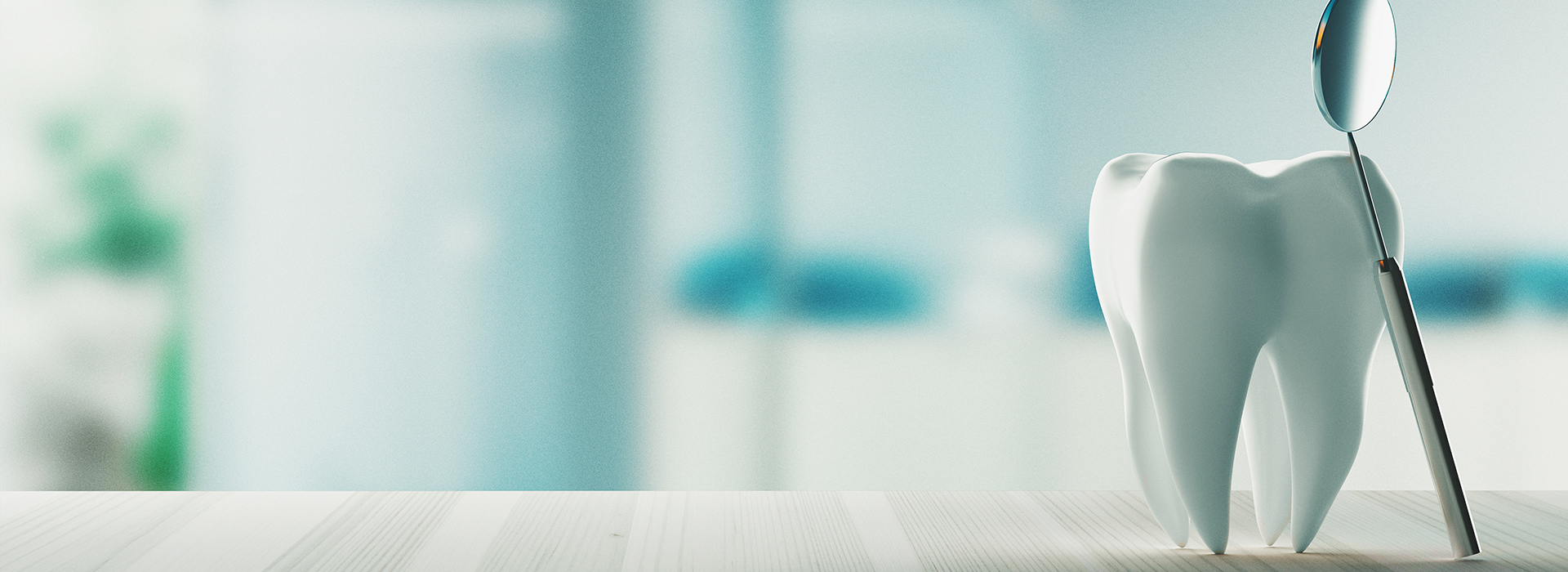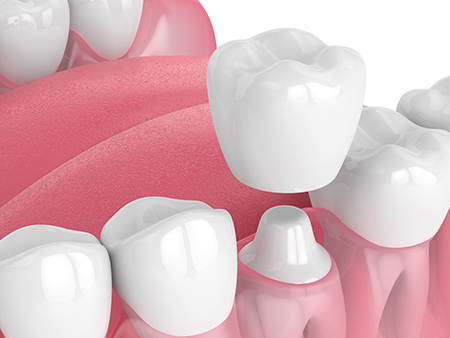New Patients
(732) 813-3564
Existing Patients
(732) 639-3495

At Elegant Dental Arts, we combine modern materials and careful planning to restore teeth that are weakened, fractured, or cosmetically compromised. Ceramic crowns have become a cornerstone of durable, natural-looking restorative dentistry — they protect damaged teeth while preserving the appearance and function patients expect from a healthy smile.
Even though enamel is the hardest substance in the body, teeth can still succumb to decay, injury, and the long-term effects of wear. In many cases a simple filling is not enough to restore structural integrity. When a large portion of a tooth is missing or when a tooth must withstand significant biting forces, a full-coverage restoration is often the most reliable long-term solution.
Thanks to advances in dental ceramics, patients today can choose crowns that are metal-free yet exceptionally strong and lifelike. These all-ceramic restorations are engineered to mimic the way light behaves in a natural tooth while offering biocompatible, stain-resistant surfaces that integrate well with surrounding tissues. Patient comfort and a precise fit are central to every treatment plan we recommend.
A crown becomes the preferred option when preserving the remaining tooth structure and restoring full function are priorities. Situations that commonly call for a crown include teeth that have suffered extensive decay, large failed restorations, or fractures that compromise the tooth’s strength. Crowns cap the entire visible portion of the tooth, providing a protective shell that restores chewing efficiency and helps prevent further damage.
Teeth that have undergone root canal therapy often require a crown to reinforce brittle tooth structure and reduce the risk of future fracture. Similarly, crowns are used routinely to restore dental implants, forming the visible replacement tooth over the implant abutment. They can also serve as the anchoring teeth for fixed dental bridges when adjacent teeth need support.
Beyond structural repair, crowns are an excellent option when aesthetics or bite alignment is a concern. An undersized, discolored, or misshapen tooth can be transformed with a carefully matched ceramic crown, improving symmetry and surface characteristics while maintaining a natural appearance. For patients who grind or clench, selecting an appropriate material and design helps increase longevity under stress.
Repairing a tooth with extensive decay or a large fracture
Replacing or upgrading a large filling that no longer supports the tooth
Restoring a dental implant or serving as an abutment in a bridge
Protecting a tooth after root canal treatment
Improving the proportion, color, or shape of a visible tooth

All-ceramic crowns are designed to reproduce the translucency, texture, and sheen of natural enamel. Modern ceramic materials interact with light in ways that approximate the subtle variations present in real teeth, which makes them an excellent choice for front teeth and other highly visible areas. At the same time, newer ceramics offer the mechanical properties necessary to withstand everyday chewing forces.
One key advantage of metal-free crowns is biocompatibility. Without a metal core, ceramic crowns eliminate the risk of visible metal margins at the gumline and reduce the potential for metal-related sensitivities. They are also less likely to cause discoloration of surrounding soft tissues and provide a stable, stain-resistant surface that maintains aesthetics over time.
Because ceramics can be milled to thin, precise dimensions, these crowns often require less removal of natural tooth structure compared with older restorative techniques. This conservation of tooth tissue supports long-term oral health and can lead to a more comfortable fit. For many patients, the combination of a conservative preparation and a highly accurate restoration results in a predictable and pleasing outcome.
When considering a crown, it’s important to weigh both functional demands and cosmetic goals. A crown that balances strength, fit, and visual harmony will protect the tooth and help patients feel confident in their restored smile.
Highly lifelike translucency and surface luster
Conservative preparations are often possible due to thinner material thickness
Lighter weight and improved comfort compared with metal-based restorations
Biocompatible and gentle to the surrounding gum tissue
Resistant to staining and long-term discoloration

Not all ceramic crowns are the same. The choice of material depends on the tooth’s location, how much force the tooth must endure, and the aesthetic outcome the patient desires. For example, a front tooth often prioritizes translucency and color matching, while a posterior tooth must prioritize strength and fracture resistance.
Contemporary ceramic options include glass ceramics that provide excellent esthetics and high-strength ceramics like zirconia for posterior teeth. Each material has distinct advantages: some offer superior polishability and color layering for a natural appearance, while others provide the toughness needed for heavy chewing surfaces. Our clinical evaluation considers bite dynamics, opposing teeth, and tissue health to guide the best selection.
When appropriate, crowns can be fabricated using a combination of technologies — such as digitally designed frameworks with customized ceramic layering — to marry strength and beauty. Whether a case calls for a more translucent ceramic or a high-strength monolithic solution, modern dentistry offers reliable options to meet a wide range of restorative goals.
Open communication is important during material selection. Patients are encouraged to discuss their priorities — durability, appearance, or minimal preparation — so the final recommendation aligns with both functional needs and cosmetic preferences.
Lithium disilicate: excellent esthetics with good strength for front and moderate-load teeth
Leucite-reinforced ceramics: highly polishable and color-stable for visible restorations
Monolithic zirconia: outstanding strength for posterior crowns and implant-supported teeth
High-translucency zirconia: newer formulations that balance translucency with robustness
With multiple ceramic options available, tailored treatment planning ensures the selected material supports the tooth’s structural needs while meeting the patient’s cosmetic expectations.

The process of restoring a tooth with a ceramic crown begins with a thorough examination and diagnostic imaging to evaluate the tooth’s condition and surrounding structures. Precise impressions or digital scans capture the exact shape of the prepared tooth and the opposing bite, which guides the lab or in‑office milling system in producing a well-fitting restoration.
Tooth preparation removes any compromised tissue and shapes the tooth to accept the crown while preserving as much natural structure as possible. A temporary restoration may be placed while the final crown is fabricated. When the definitive crown arrives, we verify fit, occlusion, and shade match before cementing the restoration with techniques that optimize retention and marginal seal.
Post-restoration care focuses on maintaining excellent oral hygiene, monitoring the health of the surrounding gum tissue, and addressing any habits — such as bruxism — that could affect the crown’s longevity. Regular dental check-ups help detect early issues and ensure the crown continues to function harmoniously with the rest of the mouth.
Our team emphasizes gentle, precision-driven techniques to make the experience as comfortable and predictable as possible, from the initial consultation through final placement.
Patients choose our practice because we combine clinical experience with contemporary materials and digital workflows to deliver restorations that last. Attention to detail during planning and execution reduces the risk of complications and improves the chance of a successful, long-term outcome. We prioritize tissue health, accurate fit, and an aesthetic result that complements the patient’s smile.
At Elegant Dental Arts, our restorative philosophy balances conservative tooth preservation with durable materials selected for each case. We collaborate with patients to set realistic expectations and provide clear guidance on care and maintenance to protect the investment they’ve made in their oral health.
If you would like to learn more about ceramic crowns or discuss whether they are the right option for a specific tooth, please contact our office for more information. Our team is happy to answer questions and help you explore restorative choices that suit your functional needs and cosmetic goals.
While a dental filling is designed to replace a portion of a decayed or damaged tooth, a dental crown offers full coverage to restore the tooth’s entire outer surface. A well-fitting dental crown not only protects and strengthens the underlying tooth structure, but it also restores the tooth’s appearance and function.
The procedure for getting an all-ceramic crown is much like the procedure for getting any other type of crown. In all cases, the tooth needs to be prepared, an impression taken, and a permanent crown cemented into place. A single all-ceramic crown can typically be fabricated over the course of two visits. However, with CAD/CAM technology, a same-day crown can be fabricated from start to finish in a single visit. With the first approach, a temporary crown is typically worn until the second visit, when the permanent restoration is placed. As with every treatment plan, our office will explain your best options in care.
As the name implies, a temporary crown is only worn for a short time until the permanent crown is placed. A temporary crown is typically fabricated from durable tooth-colored dental acrylics. While designed to protect the underlying tooth between appointments, and until your new permanent crown gets placed, a temporary crown is also fabricated to look like a natural tooth and maintain the look of your smile.
While you should feel better having an attractive and functional tooth to restore your smile, your tooth may feel a little sensitive following treatment. This initial sensitivity will subside. We take great care to make sure your new restoration looks great, fits well, and your bite is perfect. However, we’re always happy to make any minor adjustments to ensure your comfort.
With some exceptions, teeth with root canal procedures are typically restored and protected from further damage with a full-coverage crown. Based on what’s best for your smile, our office will recommend the most appropriate restoration to maintain the health and longevity of your tooth following a root canal procedure.
A dental crown is a long-term restoration that, if properly cared for, can serve you well for many years to come. Once your new crown is placed, it requires the same brushing, flossing, and periodic checkups as your natural teeth. Avoid biting your fingernails and chewing on hard or sticky objects such as ice, pencils, or taffy, which can damage or loosen your crown. Remember, clenching and grinding your teeth puts excessive pressure on both natural teeth and dental restorations. Unless treated, this habit can compromise the longevity and integrity of your dental work, including crowns.
Although your new all-ceramic crown restores the tooth's strength, form, and function, you can still develop dental disease in the absence of proper care. To prevent gum disease and tooth decay, it’s essential to brush and floss as instructed and see our office for routine checkups, cleanings, and care.
How long a dental crown lasts depends on various factors, including your level of oral care, diet, and oral habits. While the standard answer is that dental crowns can last anywhere from 5 to 15 years, existing literature confirms that most dental crowns remain in place at 15 to 20 years.
At the office of Elegant Dental Arts, we strive to provide the highest quality of care to address all your dental needs. Once we’ve had the opportunity to examine your smile, we can give you a clear picture of any dental issues that are present, along with a quote for how much treatment will be. The cost of dental crowns can vary a little, depending on the type of crown and its location. Our goals are to provide the highest quality of care and help patients begin treatment without additional financial stress or delay. We’re always happy to answer all your questions on dental insurance coverage, available financing, and payment plans.
Coverage for all-ceramic crowns depends on your dental insurance plan. Today, many dental plans provide some level of coverage for all-ceramic crowns. At the office of Elegant Dental Arts, we work with patients to optimize their dental benefits and get the care they need to maintain healthy and beautiful smiles!
Ceramic crowns are full-coverage restorations made from advanced dental ceramics designed to restore strength, function, and appearance to a damaged tooth. Unlike traditional porcelain-fused-to-metal crowns, all-ceramic crowns are metal-free and are engineered to reproduce the translucency and texture of natural enamel. Their composition allows them to interact with light in a way that closely resembles the optical properties of a real tooth.
All-ceramic crowns also offer advantages in biocompatibility because they do not contain metal cores that can show at the gumline or provoke sensitivities in some patients. Modern ceramics range from highly esthetic glass-ceramics to very strong zirconia formulations, giving clinicians options for both visible front teeth and high-load posterior teeth. The choice between ceramic and metal-containing crowns is guided by functional needs, aesthetic goals, and tissue health.
A ceramic crown is typically recommended when a tooth has lost a substantial portion of its structure due to decay, fracture, or a large failing restoration that can no longer provide adequate strength. In those situations a filling may be insufficient because it does not fully envelop and protect the remaining tooth, leaving the tooth vulnerable to further damage. A crown caps the entire visible portion of the tooth, restoring chewing function and helping to prevent future fractures.
Crowns are also commonly advised after root canal therapy because endodontically treated teeth can become brittle and are at higher risk of breakage without full-coverage protection. When a tooth serves as an abutment for a bridge or will support an implant restoration, a crown provides the necessary shape and durability to integrate with those prosthetic components. Treatment planning weighs the amount of remaining tooth, opposing forces, and aesthetic needs before recommending a crown.
Contemporary ceramic options include glass ceramics such as lithium disilicate, leucite-reinforced ceramics, and different formulations of zirconia, each with distinct mechanical and optical properties. Lithium disilicate offers excellent esthetics and good strength for anterior and moderate-load posterior teeth, while traditional and high-translucency zirconia provide superior toughness for molars and implant-supported crowns. Leucite-reinforced ceramics are valued for their polishability and color stability in highly visible restorations.
Selecting the appropriate material depends on the tooth's location, the patient's bite dynamics, and the cosmetic expectations for the case. Some workflows combine a digitally designed zirconia framework with customized ceramic layering to balance strength and lifelike appearance. A careful clinical evaluation ensures the material chosen supports long-term function while achieving the desired visual outcome.
The ceramic crown process typically begins with a comprehensive exam, diagnostic imaging, and either digital scanning or precise impressions to record the prepared tooth and opposing bite. Tooth preparation removes compromised tissue and shapes the tooth to accept the crown while preserving as much healthy structure as possible, and a temporary restoration may be placed while the final crown is fabricated. When the definitive crown returns from the lab or is milled in-office, the clinician checks fit, occlusion, and shade match prior to cementation.
Cementation involves techniques that optimize marginal seal and retention while minimizing stress on the restoration and surrounding tissues, and any necessary occlusal adjustments are made to ensure a comfortable bite. Post‑placement instructions focus on oral hygiene and monitoring the gum tissue to support healthy integration. Follow-up visits allow the dental team to evaluate the restoration and address any sensitivity or minor adjustments.
Ceramic crowns can provide many years of reliable service when they are properly designed, placed, and maintained, though individual longevity varies with several factors. Key influences include the quality of the tooth preparation and fit, the ceramic material selected, the patient's oral hygiene, and functional habits such as bruxism or chewing on hard objects. Crowns placed on teeth with unstable periodontal support or untreated bite issues may face higher risks of complications over time.
Regular dental checkups and good home care help detect early signs of wear, marginal breakdown, or recurrent decay so problems can be managed before they compromise the restoration. In cases where clenching or grinding is present, protective measures like a night guard and appropriate material selection can significantly extend the crown's lifespan. The clinical team will discuss realistic expectations and maintenance strategies tailored to each patient's needs.
Yes, ceramic crowns are commonly used as the visible restoration on implant abutments and can also serve as pontics or retainers in fixed dental bridges when indicated. On an implant, the crown is attached to an abutment that connects to the implant fixture, and ceramic materials offer a natural appearance while resisting staining and maintaining tissue-friendly margins. For bridges, crowns on the abutment teeth provide support for the pontic that replaces a missing tooth.
Material choice for implant and bridge restorations considers occlusal forces, access for hygiene, and the aesthetic demands of the site; monolithic zirconia is often chosen for posterior high-load areas while layered ceramics may be preferred in highly visible zones. Proper design and precise fit are essential to allow cleaning under and around bridge components and to protect the health of adjacent tissues. The restorative plan will factor in long-term maintenance and the patient's ability to maintain oral hygiene around the prosthesis.
Caring for a ceramic crown involves the same daily oral hygiene practices recommended for natural teeth: thorough brushing with a fluoride toothpaste and daily flossing to remove plaque at the gumline and between teeth. Attention to the restoration's margins is important because recurrent decay at those interfaces is a common reason for crown failure. Regular professional cleanings and dental examinations allow the clinician to monitor the crown and surrounding tissues and to address early issues promptly.
Patients should avoid repetitive habits that place excessive stress on a crown, such as biting fingernails, chewing ice, or using teeth to open packages. If nighttime grinding or clenching is a concern, discuss a protective occlusal splint to minimize wear and reduce the risk of fracture. Promptly report any persistent sensitivity, looseness, or roughness so adjustments or interventions can be made before more significant problems develop.
Patients who grind or clench present a challenge because parafunctional forces increase the risk of restoration wear, chipping, or fracture, but ceramic crowns can still be a suitable option with appropriate planning. Material selection is key: high-strength monolithic zirconia is often used where maximum fracture resistance is needed, while layered ceramics may be reserved for less stressed areas. Design factors such as occlusal morphology and full-coverage form also influence how well a crown will withstand heavy occlusal loads.
Protective measures like a custom night guard are commonly recommended to shield both the crown and natural dentition from excessive forces during sleep. Addressing bite relationships and any contributing factors through occlusal adjustment or orthodontic considerations may further reduce risk. A thorough evaluation helps the dental team recommend solutions that balance durability with acceptable aesthetics for the individual patient.
Yes, ceramic crowns are specifically designed to mimic the color, translucency, and surface texture of natural teeth when shade selection and characterization are performed carefully. Modern ceramics can be layered and stained to reproduce subtle variations in enamel and dentin, and digital imaging or shade-matching systems help ensure a consistent result. Attention to the crown's contour and finish also affects how light reflects from the surface, which contributes to a lifelike appearance.
The clinical team at Elegant Dental Arts collaborates with patients to discuss aesthetic priorities and to select a material and finishing approach that meets those goals while maintaining function. In some cases, conservative adjustments to adjacent teeth, such as whitening prior to shade matching, improve overall harmony. Final evaluation includes checks for color, shape, and how the restoration blends with the smile under varied lighting conditions.
Potential risks associated with ceramic crowns include sensitivity after preparation or placement, marginal leakage leading to recurrent decay if oral hygiene is inadequate, and the possibility of chipping or fracture under excessive force. Although ceramics are highly durable, no restoration is indestructible, and failures can occur due to poor fit, compromised tooth structure, or untreated bite problems. Occasionally a crowned tooth may develop new symptoms that require endodontic treatment if the pulp becomes inflamed.
If complications arise, the office of Elegant Dental Arts will evaluate the cause and advise on appropriate options, which may include adjustment, repair, recementation, or replacement depending on the situation. Regular recall visits and timely attention to changes in comfort or function help detect issues early and preserve both the restoration and underlying tooth. Open communication with your clinician ensures that risks are minimized and addressed promptly if they occur.

